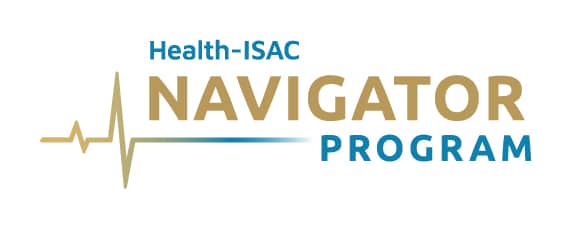The demand for cybersecurity services and expertise is greater than ever, but the supply of cybersecurity professionals in the workforce isn’t keeping up. With the scarcity and high cost of cybersecurity talent, more companies are engaging third-party cybersecurity vendors to help with key security efforts. In fact, 45% of all small and medium businesses and 48% of all enterprises are taking a hybrid approach, pairing internal security operations with a managed detection and response (MDR) provider.
Unlocking the power of MDR is one step you can take toward strengthening your organization’s cybersecurity posture. MDR service providers have the expertise, proven processes, and advanced technology tools to support internal teams and keep systems safe from data breaches or other incidents.
Let’s take a closer look at six essential MDR services and the benefits of working with a trusted partner for these efforts.
1. Continuous Threat Monitoring
Continuous threat monitoring involves real-time observation and assessment of an organization’s infrastructure and digital assets for security-related events or indicators of compromise. In other words: threat monitoring means keeping an eye on your systems and investigating anything that looks suspicious, and it’s an important part of mitigating your overall risk of exposure.
As a key component of MDR, continuous threat monitoring includes the following:
- 24/7 monitoring of your systems
- Early threat detection
- Rapid incident response
- Proactive risk mitigation
- Compliance and regulatory requirement coverage
- Insider threat detection
- Enhanced situational awareness
Continuous, proactive monitoring as part of an MDR package allows you to stay ahead of emerging threats and respond swiftly to safeguard systems, networks, and data from cyberattacks.
2. Threat Hunting and Investigation
Despite vigilant monitoring efforts, some threats can occasionally bypass existing security controls. Threat hunting involves actively searching for hidden or emerging threats that may have evaded your defensive safeguards. To find these elusive threats, MDR service providers leverage automated security systems, human-guided exercises, or a combination of both.
During a threat hunt, experts conduct thorough investigations, analyze indicators of compromise, perform forensic analysis, and employ behavioral analytics to identify potential threats and their impact.
Benefits of threat hunting and investigations include:
- Early detection of security risks and vulnerabilities
- Less downtime in the event of a breach
- Increased visibility of security infrastructure
- Reduce false positives and save resources
- Improve threat intelligence with data collected
Threat hunting strengthens security defenses and helps you respond more effectively to potential security incidents.
3. Incident Response and Remediation Plans
Although continuous threat monitoring and threat hunting help reduce risk and catch issues earlier, cyber incidents can still happen — that’s where the incident response and remediation process comes in.
When a breach or attack occurs, it pays to be prepared. MDR service providers invest significant time and resources into incident response and remediation plans because every second counts. A solid response plan limits the time threats go unresolved, reducing the potential damage an attack can inflict and helping affected organizations recover quickly.
Incident response and remediation plans can include the following:
- Key personnel identification
- Personnel roles and responsibilities
- Information sharing guidelines
- Communication guidelines
- Strategy for securing the affected area
- Strategy for restoring stability
- Strategy for conducting investigations
When incidents occur, MDR providers collaborate closely with internal IT and security teams to ensure a unified response and fast, efficient restoration of operations.
4. Immediate Remote Mitigative Response
In addition to having a solid plan, you need to respond to any potential incidents as quickly as possible. The longer a threat goes undetected and unmitigated, the more damage it can do. An MDR provider should be available to immediately and remotely respond in the event of an incident — even if it occurs outside of regular business hours.
As soon as an incident is detected, the MDR partner takes action to investigate the threat and implement containment procedures like re-authenticating users or quarantining hosts. Without MDR, you might not even know about an incident until it has wreaked havoc in your system.
Their expertise and infrastructure give MDR vendors a faster reaction time than most in-house security teams. The right MDR partner will not only reduce the spread of issues — they will restore your confidence in a time of crisis.
5. Endpoint Security Management
One Stanford University study estimates 88% of data breaches are caused by an employee mistake. This indicates your employees’ devices, including desktop computers, laptops, tablets, and cell phones, are especially vulnerable to exploitation. Endpoint security management focuses on securing these individual devices and preventing endpoint incidents.
MDR teams use endpoint detection and response (EDR) to monitor endpoints in real-time, spot suspicious activities, detect and respond to threats, conduct vulnerability assessments, and enforce security policies.
EDR in action includes:
- A dedicated team of experts monitoring endpoint threats
- Analyzing endpoint activities and data for anomalies
- Containing and remediating threats
Endpoint security management protects potential threat entry points across your organization and should be included in any MDR package.
6. Security Analytics and Reporting
Security analytics and reporting involve collecting and examining vast amounts of security data to glean valuable insights from past incidents, detect patterns, understand potential threats, and prevent future attacks.
With advanced security analytics tools and machine learning algorithms, MDR service providers can enhance their ability to identify anomalous activities and indicators of compromise, which means faster response times and lower overall risk.
- Benefits of security reporting include:
- Comprehensive visibility of your whole security posture
- Insights into incident trends
- Assessment of the effectiveness of your security measures
- The basis for data-based decision-making
- Source for identifying areas for improvement
- A path to more effective security strategies
By leveraging security analytics and regular reporting, an MDR provider can help you understand the threat landscape and make data-informed decisions.
Elevate Your Cyber Defense With Managed Detection and Response
MDR is a powerful option for companies looking to strengthen their cybersecurity. With the current state of the cybersecurity workforce, a hybrid approach makes the most sense for many organizations — supporting your in-house security staff by outsourcing certain functions to a trusted MDR service provider. The right MDR partner will serve as an extension of your team, collaborating seamlessly to help fortify your cybersecurity infrastructure and protect your digital assets.



